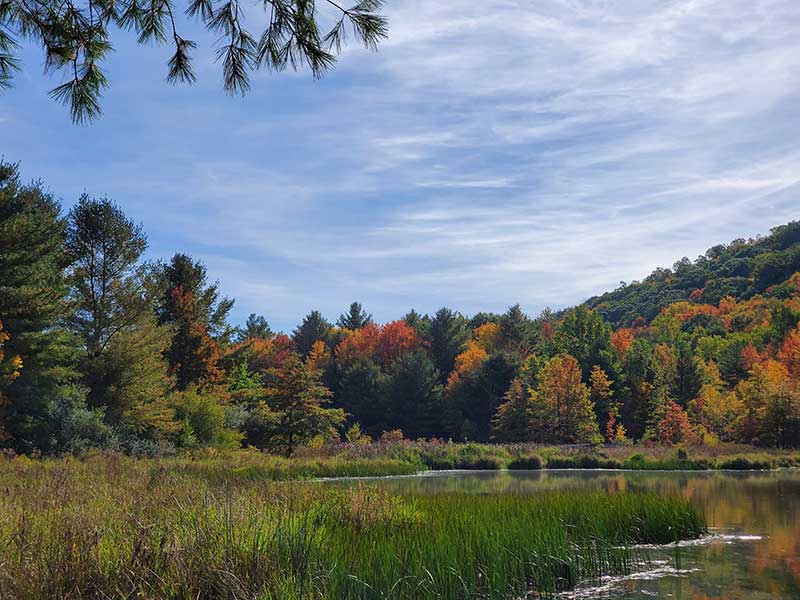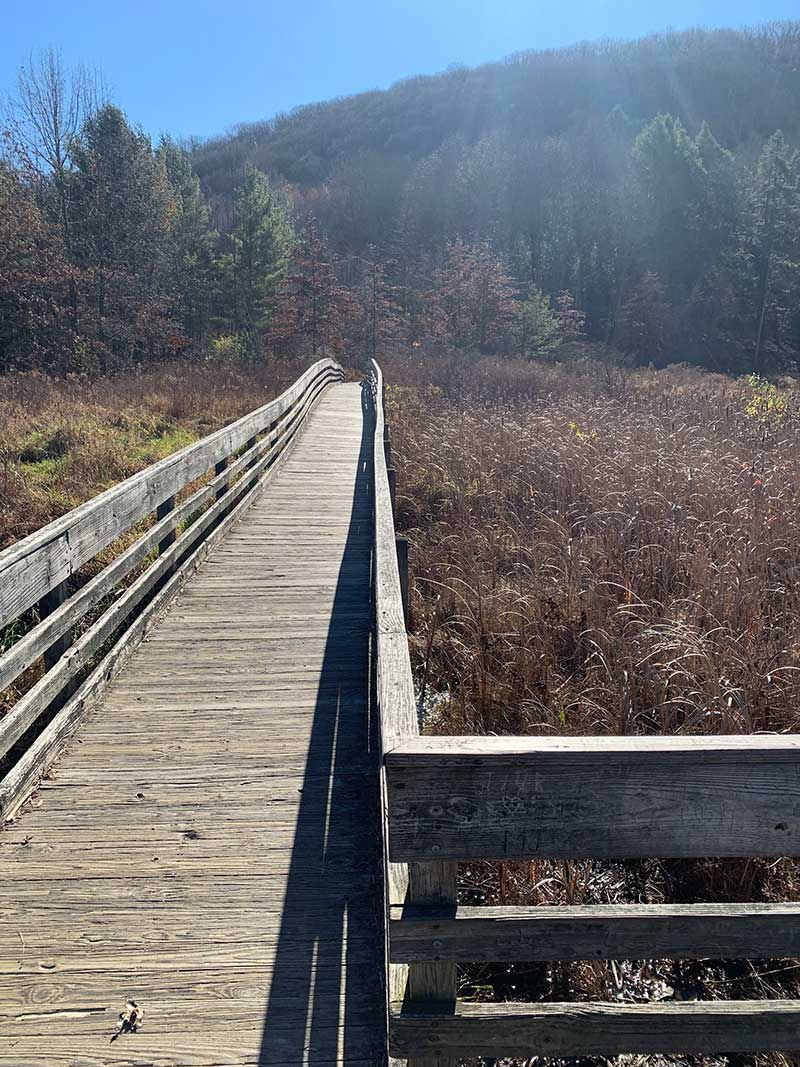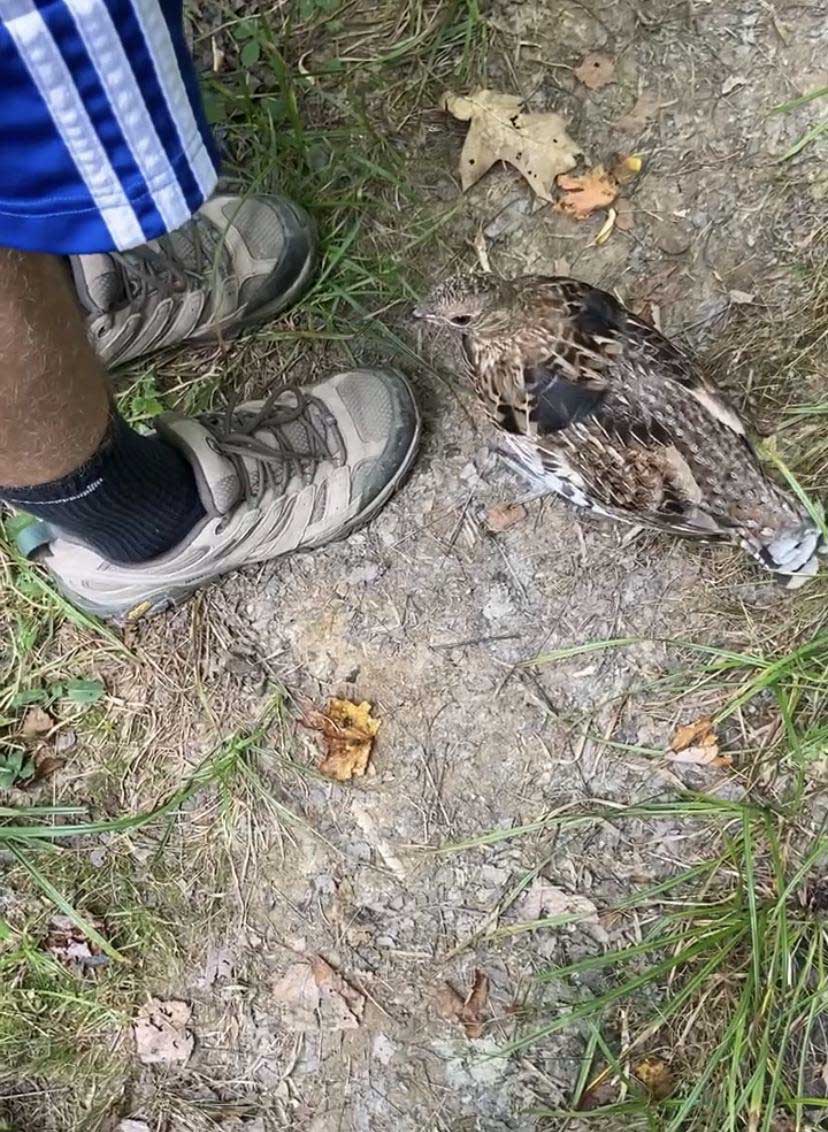soundcloud: Collaborative Composition - Aidan, Karli, Lauren, & Evan

Section 1: Lauren Frye
The underlying sound in the beginning and end of my fall portion of our group composition was recorded on September 6th, at the far end of the forest loop trail. It’s a compilation of crickets at night and soft rain falling in the treetops above. It’s one of the most peaceful sounds I’ve recorded, and to this day, is one of my favorites. I traversed the preserve that night with my friend Rachel; it was a great night to record and we had fun experimenting with the contact microphone for the first time as well. The stereo recording included in the group composition started at 10:04PM. The light rain never reached us underneath all the trees, so we were able to simply stand there and listen to it playing along with the crickets. It was a great experience and the recording was just what I was aiming for in working on the group composition.
One of the sounds in the middle of the fall portion is from a lovely fall day in mid-October. When the wind picked up, I’d hear the leaves hitting the ground as they fell from the trees, so I decided to sit down and wait to catch a gust of wind. After about five minutes into the recording, leaves can be heard falling all around me. I had the Binaurals that week, so it’s a really entrancing surround sound that takes me right back to that moment when I re-listen to it. I recorded for this particular week’s assignment around 11AM on October 12th, and got the best photos of the nature preserve I’ve ever taken. This was definitely my favorite week to record, and what I hoped to encapsulate when working on the fall portion of the group composition. The photo I’ve included to go with this section of the group edit is from that week, reminding me of the beauty and liveliness of fall.
Section 2: - Aidan Crowley
In this section of the group composition I chose to focus on the liveliness of the summer season. A recurring motif throughout the section is the Mobb call we recorded. Although it was recorded near the tail end of the summer I felt it was a good analogy to sounds that we may not have had a chance to experience in July and early August at the height of summer. Included in the piece is both the Mobb call itself, which was recorded and we played through a speaker, and the vivid response of the nearby real birds.
A secondary focus of the recording was water. Two different sounds produced by water were sampled in the piece. At the beginning is my first successful hydrophone recording of the water under the bridge in the pipeline trail. It was actually recorded much closer to the winter when the water levels on campus began to rise. In the summer, this body of water was much smaller, more minor runoff from the lake, as shown in the picture. However by November it was flowing pretty furiously. Although it is technically a winter sound, running water is not exclusive to any season and it also represents the storms that sometimes take place during summer. I also sampled many recordings of rain from the summer months to further express the theme of liveliness in the weather. The piece ends with sounds from crickets I recorded in the middle of September on the Oak trail. This was done to calm the piece a little bit and segue into the fall section, which begins with the sounds of crickets.
Evan Kirkpatrick
Moment 1: Creaking tree sound
I had the ELF the week I recorded this and was not having good luck getting anything quality from the ELF. If was a cold and windy day, so there were other good sounds from trees and leaves in the wind. I was already a bit discouraged by the ELF results and I was trying to find other places to try it when I went on Vernal trail and heard this creaking in the wind. I knew it was a good find so I located the tree and first tried our contact on it. The contact seemed to have had a loose connection and wasn’t transmitting any sound, which was another disappointment. I resorted to recording it on my stereo recorder but was still not pleased with how the session was going. Later, when I used the sound in ableton and edited it, I realized how nice of a recording it turned out being and the session turned out to be a success.
Moment 2: Wind over the marsh
Oddly enough, this recording was from the same week but of the other part of the assignment to get fall sounds. These recordings went much more smoothly than the previously described ones, with the strong winds creating many good fall sounds to choose from. I chose to record the wind blowing across the marsh where the bridge is as it sounds much different than the trees. The result was a nice strong wind noise, without the sound of leaves which was helpful in my use of it as I did the winter segment of our piece. The wind almost sounds cold and sharp, which it was, and that helps convey my winter feeling. The trouble I did have with this recording was that the wind was unpredictable and ended up peaking a few times as I didn’t expect some of the gusts to be as strong as they were. Fortunately, I was able to mitigate this ith edits and ended up with a nice sound.

This image is from where I recorded the wind over the marsh, and does a good job of showing the state of barren trees mixed with conifers just past the marsh which also looks dull and ready for winter.
Karli Doig
One popular motif in the spring and summer segments is the mob calls. I was introduced to the mob call when Prof. Justin Mann came to record with the class and explained his research with birds in the Nature Preserve. When we went out to record, it was very windy and cold for that time of the year, making editing the wind out of the recording challenge. Since I was assigned to spring, I thought the wind wasn’t a sound that best represented that season. During both mob calls, it was very interesting to see how quickly the birds responded to the “imminent danger” of the screeching owl. Later in the semester, I was recording with Taylir and we wanted to generate some sound so we used the mob calls. At first, it failed many times because we thought our phones weren’t loud enough, but to our surprise, the mob call worked.
